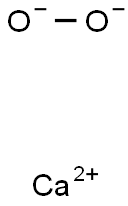Sodium peroxide , ACSreagent,≥93.0% , 1313-60-6
Synonym(s):
Sodium peroxide;Sodium superoxide
CAS NO.:1313-60-6
Empirical Formula: Na2O2
Molecular Weight: 77.98
MDL number: MFCD00003497
EINECS: 215-209-4
PRODUCT Properties
| Melting point: | 460 °C (dec.)(lit.) |
| Boiling point: | 657°C |
| bulk density | 1138kg/m3 |
| Density | 2.8 |
| vapor pressure | 0.001Pa at 20℃ |
| Flash point: | 657°C |
| storage temp. | Store at +15°C to +25°C. |
| solubility | Soluble in acid. Insoluble in alkali. |
| form | beads (small) |
| color | Yellow |
| Specific Gravity | 2.805 |
| Odor | Odorless |
| PH Range | 12.8 |
| PH | 12.8 (100g/l, H2O, 20℃) |
| Water Solubility | Soluble in water, forming NaOH and H{2}O{2}. Soluble in acid. Insoluble in alkali. |
| Sensitive | Air Sensitive & Hygroscopic |
| Merck | 14,8655 |
| Dielectric constant | 2.7(Ambient) |
| Stability: | Reacts violently with water. Contact with combustible materials may cause fire or explosion. Incompatible with strong oxidizing agents, alcohols, organic materials, acids, powdered metals. Absorbs carbon dioxide from the air. |
| CAS DataBase Reference | 1313-60-6(CAS DataBase Reference) |
| EPA Substance Registry System | Sodium peroxide (1313-60-6) |
Description and Uses
Sodium peroxide has a molecular formula of Na2O2 and is an inorganic peroxide salt. It is a yellowish-white powder that turns yellow when heated. Sodium peroxide absorbs water and carbon dioxide from the air and is soluble in cold water. It is a strong oxidizing agent, is corrosive and can cause burns to the eyes and skin, and is also toxic by ingestion and inhalation. Sodium peroxide is water reactive and a dangerous fire and explosion risk in contact with water, alcohol, or acids. Sodium peroxide forms self-igniting mixtures with powdered metals and organic materials. It is incompatible with ethyl or methyl alcohol, glacial acetic acid, carbon disulfide, glycerin, ethylene glycol, and ethyl acetate. The four-digit UN identification number is 1504. The NFPA 704 designation is health 3, flammability 0, and reactivity 1. The 704 diamond has the prefix “oxy” in the white space at the bottom. It is used as bleach and as an oxygen-generating material for diving bells and submarines.
Bleaching animal and vegetable fibers, feathers, bones, ivory, wood, wax, sponges, coral; rendering air charged with CO2 respirable as in torpedo boats, submarines, diving bells, etc.; purifying air in sick rooms; dyeing and printing textiles; chemical analysis. General oxidizing agent.
Safety
| Symbol(GHS) |   GHS03,GHS05 |
| Signal word | Danger |
| Hazard statements | H271-H314 |
| Precautionary statements | P210-P220-P260-P280-P303+P361+P353-P305+P351+P338 |
| Hazard Codes | O,C |
| Risk Statements | 8-35 |
| Safety Statements | 8-27-39-45 |
| RIDADR | UN 1504 5.1/PG 1 |
| WGK Germany | 1 |
| RTECS | WD3450000 |
| F | 3-9-23 |
| TSCA | Yes |
| HS Code | 2815 30 00 |
| HazardClass | 5.1 |
| PackingGroup | I |
| Hazardous Substances Data | 1313-60-6(Hazardous Substances Data) |
| Excepted Quantities | Not Permitted as Excepted Quantity |




